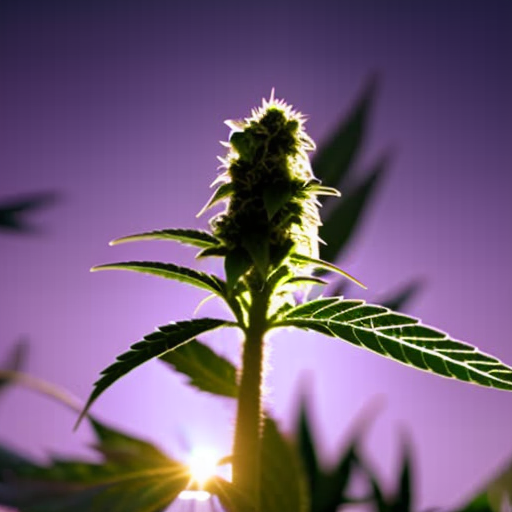
Gettin’ Down with Cannabis Genetics Lingo
Ayo, what’s good fam? We talkin’ ‘bout that green gold today—cannabis, ya feel me? Out here, we got thousands of different strains poppin’ up all over the globe, and breeders keep addin’ more to the mix. If you tryna understand what makes them varieties you love so much, I gotchu! We gon’ break it down in a way that’s easy to vibe with.
Knowin’ Your Cannabis Strains and Genetics
First off, let’s get it straight—cannabis is what they call a dioecious plant. That means each plant is either male or female, ya dig? The ladies grow them pretty flowers with them glittery trichomes, which is where all that good stuff like cannabinoids and terpenes come from. The fellas, on the other hand, got them lil’ pollen sacs to do their thing with the ladies.
But hold up! Sometimes, you got plants that are monoecious, meanin’ they got both male and female parts. This is called hermaphroditism, and it’s like a plant’s backup plan when times get tough. But trust, most growers ain’t tryin’ to deal with that ‘cause it can lead to seeds messin’ up their harvest.
Cannabis belongs to the Cannabaceae family, which is also got hops and other plants in it. Now, while you might see cannabis all over the world, it’s believed to have started in Central Asia. That’s where it was probably first domesticated too.
Now, cannabis can be split into three main subspecies: Cannabis sativa, Cannabis indica, and Cannabis ruderalis. Each got its own unique traits:
Cannabis sativa
These bad boys come from warm, tropical spots. They take longer to flower and grow taller, with big ol’ spaces between the nodes. Sativas usually crank out airy buds that can handle the heat and humidity.
Cannabis indica
Indicas come from colder areas, like Central Asia and the Indian subcontinent. They shorter and bushier, flower quicker ‘cause they adapted to them short summers, and they pack more dense buds than sativas.
Cannabis ruderalis
Now, ruderalis is a lil’ different. Found in Russia way back in the 1920s, these plants are small, only hit about 60 cm tall, and they got skinny stems with few branches. Unlike sativas and indicas, ruderalis flowers automatically after about four weeks, no matter the light cycle.
A Quick Note on Hemp
Now, don’t get it twisted—hemp ain’t a whole different species. It’s just the name for cannabis bred for industrial uses, like makin’ fibers for clothes and whatnot. Hemp usually got low THC levels and grows thick, sturdy stems with not too many branches.
Knowin’ Genotype and Phenotype
If you wanna get real with cannabis genetics, you gotta know about genotype and phenotype.
Genotype
Genotype is all about the plant’s genetic makeup—basically the code it got from its parents. This code tells the plant what traits it might show off, like height, color, and leaf shape. Think of it like the blueprint for all the potential the plant could express.
Phenotype
Now phenotype is the actual traits a plant shows as it grows. This is influenced by both genetic factors and the environment. So even if two plants have the same genotype, if they’re grown in different conditions, they gonna look and act different!
Example: Phenotype vs Genotype
Check it—let’s say you pop a pack of seeds from the same parents. You treat them all the same—same soil, same water, same light. But when harvest time comes, you’ll see some slight differences. That’s because each one got its own unique genotype, which interacts with the environment to shape its phenotype.
Breeders be usin’ phenotype selection to create new strains. They pick the plants that thrive in the same environment to bring out those desired traits over time. Remember, phenotype is influenced by both genes and environment. Even clones, which share the same genotype, can show different phenotypes based on where they grow and how they’re treated.
Understanding Cannabis Genetics Terms
Now that we got the basics locked down, let’s hit up some common terms you gotta know in the cannabis world:
- Chemovar / Chemotype / Cultivar / Strain: These terms get tossed around a lot. Chemovar and chemotype are about categorizing strains based on the main cannabinoids and terpenes they feature. Cultivar refers to plants that have been bred by humans, while strain is more commonly used in microbiology but is often applied to cannabis too.
- Stabilization: This is where breeders work to create plants that show more consistent traits by reducing genetic diversity.
- Purebreds and Landraces: “Pure” cannabis is kinda a myth nowadays. Most strains been crossbred so much over the years. Landrace varieties are those that developed naturally in their environment without mixing with other strains.
- Heirloom Varieties: These are old-school cultivars that haven’t been messed with much. They represent the roots of cannabis cultivation.
- Crossbreeding: This is when you take one strain and mix it with another by pollination. Simple as that!
- Inbred Lines (IBLs): These are created by breeding plants with known traits, leading to plants that are pretty similar genetically.
- F1 Hybrids: This is the first generation of offspring from two inbred lines. They usually show a lot of consistency.
- Polyhybrids: These are mixed breeds from two F1 hybrids and have more genetic variation.
- Backcrossing (BC): This technique is used to bring back a specific trait by crossing a hybrid with one of its original parents.
- S1: This describes seeds produced by a plant pollinating itself.
Wrapping It Up
The world of cannabis genetics is deep, but now you got the lowdown. Whether you lookin’ to breed your own strains or just wanna be more in the know about your favorite buds, keep this info handy. Stay lifted, fam!



